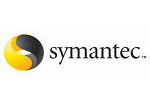PostgreSQL Maestro online Help
Aggregates
Like most other relational database products, PostgreSQL supports aggregate functions. An aggregate function computes a single result from multiple input rows. Some basic and commonly-used aggregate functions are included with the distribution. If one defines new types or needs an aggregate function not already provided, then an Aggregate can be used to provide the stated features.
New aggregates are created within Create Aggregate Wizard. In order to run the wizard you should either
| • | select the Object | Create Database Object... main menu item; |
| • | select the Aggregate icon in the Create Database Object dialog |
or
| • | select the Aggregates list or any object from that list in the explorer tree; |
| • | select the Create New Aggregate... item from the popup menu |
or
| • | open the schema in Schema Editor and the Aggregates tab there; |
| • | press the Insert key or select the Create New Aggregate item from the popup menu (alternatively, you may use the corresponding link of the Navigation Bar). |
To create a new aggregate with the same properties as one of the existing aggregates has:
| • | select the Object | Duplicate Database Object... main menu item; |
| • | follow the instructions of Duplicate Object Wizard. |
|
Aggregates can be edited within Aggregate Editor. In order to run the editor you should either
| • | select the aggregate for editing in the explorer tree (type the first letters of the aggregate name for quick search); |
| • | select the Edit Aggregate ... item from the popup menu |
or
| • | open the schema in Schema Editor and the Aggregates tab there; |
| • | select the aggregate to edit; |
| • | press the Enter key or select the Edit Aggregate item from the popup menu (alternatively, you may use the corresponding link of the Navigation Bar). |
You can change the name of the aggregate using the Rename Aggregate dialog. To open the dialog you should either
| • | select the aggregate to rename in the explorer tree; |
| • | select the Rename Aggregate item from the popup menu |
or
| • | open the schema in Schema Editor and the Aggregates tab there; |
| • | select the aggregate to rename; |
| • | select the Rename Aggregate item from the popup menu (alternatively, you may use the corresponding link of the Navigation Bar). |
|
To drop an aggregate:
| • | select the aggregate to drop in the explorer tree; |
| • | select the Drop Aggregate item from the popup menu |
or
| • | open the schema in Schema Editor and the Aggregates tab there; |
| • | select the aggregate to drop; |
| • | press the Delete key or select the Drop Aggregate item from the popup menu (alternatively, you may use the corresponding link of the Navigation Bar) |
and confirm dropping in the dialog window.
|





 Download
Download Buy
Buy